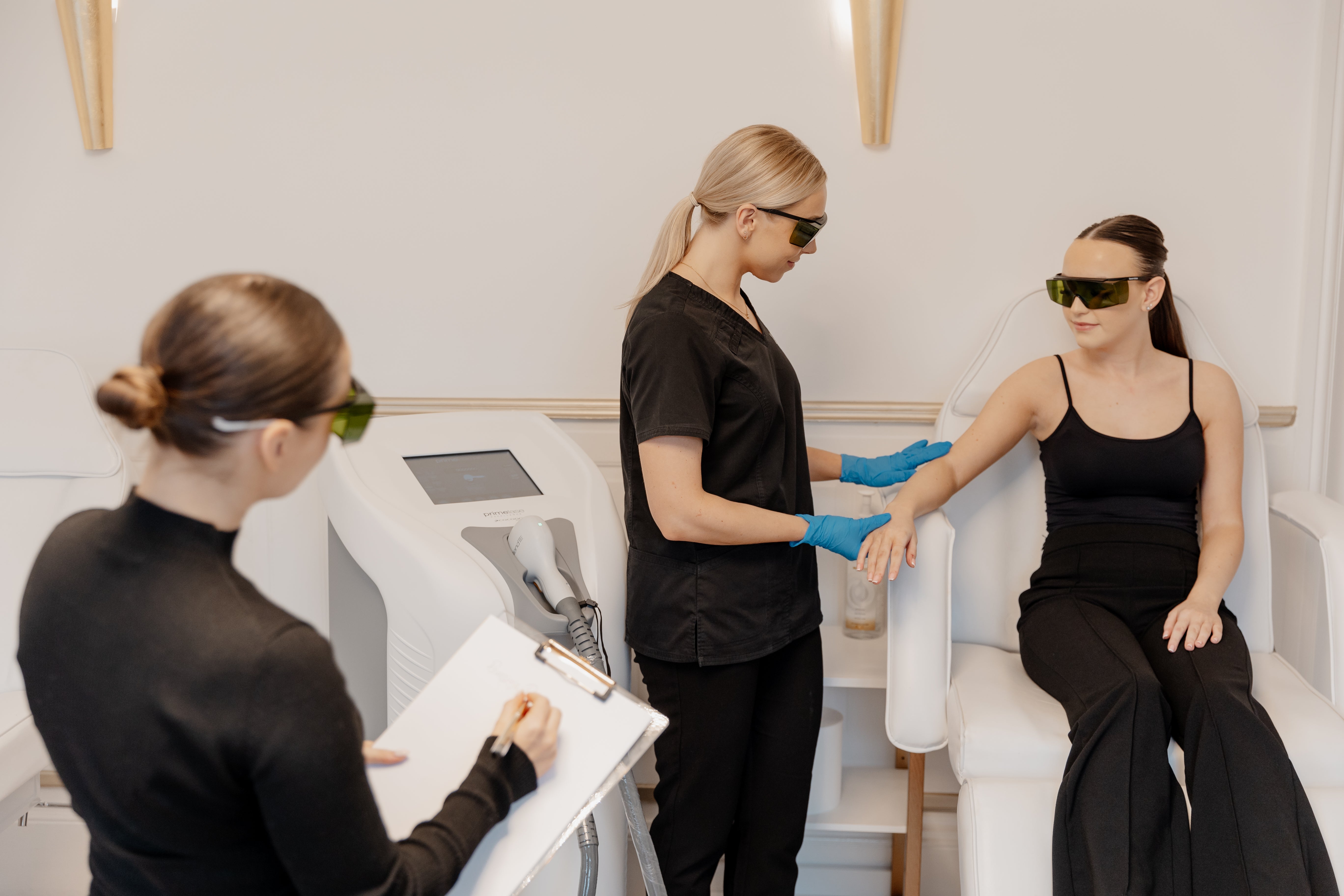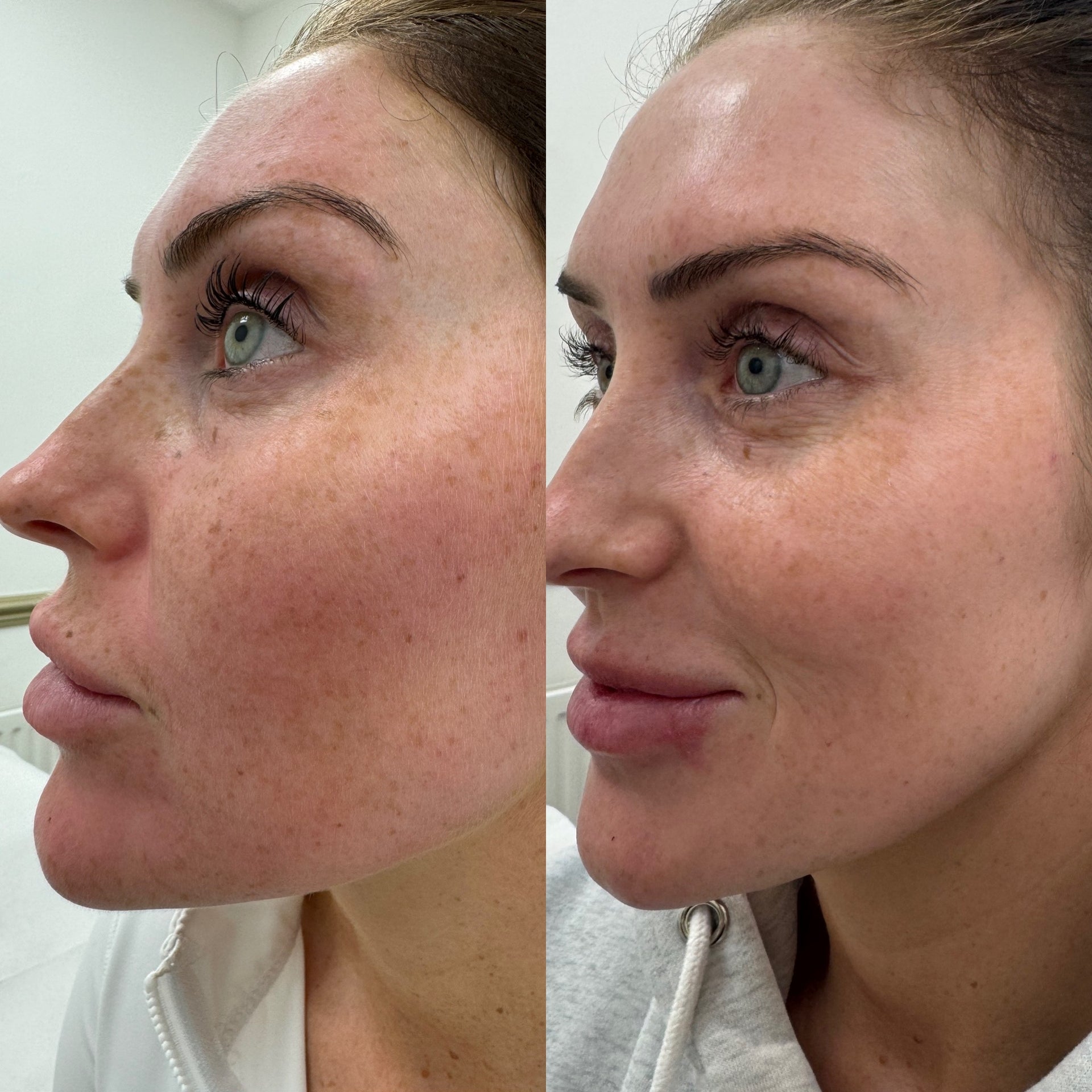A typical Sunerase™ session lasts between 20-40 minutes, depending on the area being treated. After your session, there is minimal downtime, and most clients can resume their daily activities immediately.
The number of treatments varies based on the extent of sun damage and your skin’s response. Most clients see noticeable improvements after just one treatment, but a series of 2-4 sessions is often recommended for optimal results. Our team will advise you on the best treatment plan based on your individual needs.
After the treatment, your skin may appear slightly red or feel warm, similar to mild sunburn. This is a normal reaction and should subside within a few hours. Over the next week, you will notice some light flaking or peeling as the skin sheds damaged cells. Applying sunscreen and following aftercare instructions is essential to ensure the best results.
Most clients experience no significant side effects, but some may have mild redness or swelling immediately after treatment. This typically resolves within a few hours. Rarely, some individuals may experience temporary pigmentation changes or mild irritation. Our specialists will guide you through aftercare to minimise any risks. It is completely normal after the dead skin sheds, for the skin to remain pink underneath. This is a normal part of the skin regeneration process, which will clear over time.
After your Sunerase™ treatments, we recommend applying sunscreen daily with at least factor 50spf to protect your skin. Keeping the treated area moisturised and cool and refrain from picking or scratching any treatment areas. We would recommend it is advisable to wait at least 6 weeks before and at least 4 weeks after treatment before any direct sun exposure.
Results can vary, but many clients start to see noticeable improvements within 1-2 weeks following treatment. The skin continues to improve over the following weeks as collagen production increases and pigmentation fades.
With proper skincare and sun protection, the results of Sunerase™ can be long-lasting. However, continued sun exposure can contribute to the development of new pigmentation, so it’s essential to maintain a good skincare routine and use sunscreen regularly.
Sunerase treatment is only suitable for skin types 1–3. If you’re unsure about your skin type or whether this treatment is right for you, our experts can provide a consultation to discuss your options.







